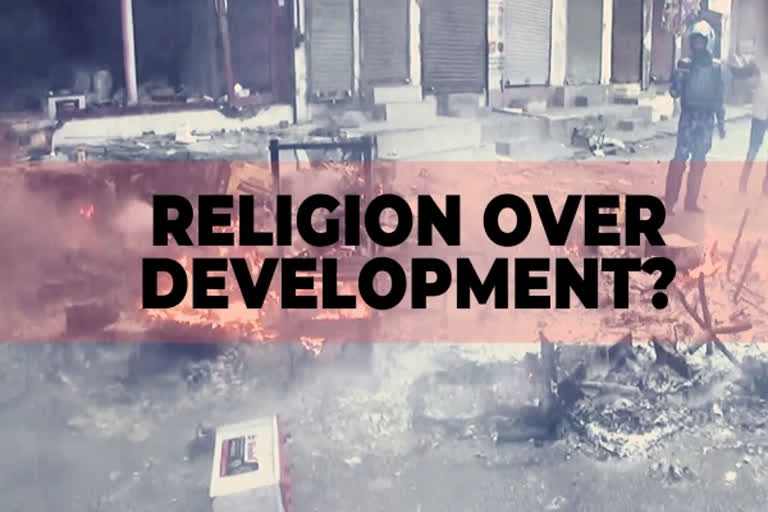Hyderabad: From Monday to Wednesday morning, the fast-spreading communal violence in Delhi is as surprising in its occurrence as in its intensity. It underlines the fact that religion is still key to the psychology of the masses even as it robs Arvind Kejriwal of his party’s key narrative of development.
At last count, the death toll stood at about 20, while the number of injured crossed 150.
With US President Donald Trump’s visit coming to an end on Tuesday night, there were obvious indications that controlling the Delhi violence was foremost on the Central government’s mind.
Home Minister Amit Shah convened a late-night meeting with top security and police officials while the government’s top troubleshooter Ajit Doval, National Security Advisor, went out to the affected places to have a first-hand understanding of the situation.
Early this month, the Aam Aadmi Party (AAP) had swept across the Delhi poll landscape, bagging 62 of the total 70 assembly seats in the recently-concluded polls. AAP’s main plank in its poll campaign was development, where socio-economics preceded everything else. Religion and religiosity were reduced to the back-burner.
On the other hand, the BJP’s high-pitched focus was on the steadfast opposition to the Citizenship Amendment Act (CAA) and the ongoing sit-in protest in Delhi’s Shaheenbagh. The BJP won in just 8 seats while the Congress was reduced to zero.
Several things stand out in the latest breakout of violence.
The helplessness of the ruling AAP in dealing with the Hindu-Muslim conflagration has been palpable. But the Delhi Police is under the Union home ministry’s control. So the AAP can lay the blame at the Centre’s doorstep even as it can reiterate its old demand for control over Delhi Police.
The riot-affected communities in Delhi’s northeast demonstrate the classic pattern of the lower socio-economic strata being the hardest-hit when it comes to communal riots. Lower-income areas Jaffrabad, Seelampur, Gokulpuri, Bhajanpura are home to both Hindus and Muslims living in competitive numbers.
The attacks have been fairly well-targeted which implies the information of who stays where and who owns which shop has been accessible and available. This has dangerous implications for the pursued politics of polarisation.
But the most dangerous implication is on the perceived role of the Delhi Police. For, once the police are seen to have a partisan attitude, the belief in rule of law is eroded. And nothing can be worse for democracy.
In an indication that the administration will come down strongly, changes are already being made in the top echelons of Delhi Police.
But despite the apparent failure of its dominant narrative of development, what the AAP should not lose sight of is the fact that they can utilize the invincible power of goodwill (as depicted in the poll results). They can immediately organise the people in common platforms like inter-faith committees to stem the growing communal hatred.
While the police can employ the tough line, in times like these, nothing works like people power and civic society at large.



